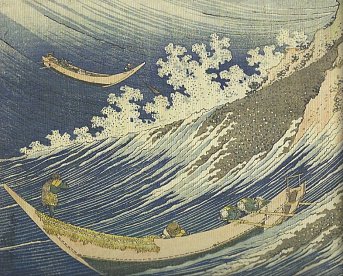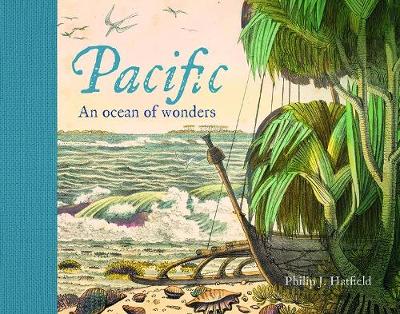Graham Reid | | 2 min read

In our part of the world we look at that what Baldrick called the “big blue wobbly thing” and we think of Samoa, Tonga, Fiji, Niue and other near neighbours.
That to most of us in Aotearoa New Zealand is what the Pacific means.
But if you are in Chile, Mexico, the Pacific North West or the Aleutian Islands then you have another Pacific. Up there in the north where massive logs and seals are scattered across the shoreline of Oregon or Washington, the Pacific is a much more fearsome thing.
And the same body of water touches the coasts of Russia, China, Japan, Vietnam, coils around Papua New Guinea and the north east of Australia . . .
It holds islands as diverse as Hawaii, the Galapagos, Tuvalu, Taiwan and remote Pitcairn.
So many different Pacifics.
And parts of it were explored by the great maritime nations of Europe and Britain, courageous travelers in huge waka and ridiculously small barques, powerful clippers and undersea diving bells and submarines.
The Pacific has been charted and probed over many centuries, and yet in many ways its sheer vastness means it remains a mystery.
 In this 224-page coffee-table hardback which is lavishly illustrated with ancient maps, photographs, paintings and images of artifacts and historic characters, the writer and researcher Philip J Hatfield – Head of the Eccles Center for American Studies at the British Library – undertakes the impossible: to provide an overview of the known history of the Pacific as seen through the many different eyes from all its corners.
In this 224-page coffee-table hardback which is lavishly illustrated with ancient maps, photographs, paintings and images of artifacts and historic characters, the writer and researcher Philip J Hatfield – Head of the Eccles Center for American Studies at the British Library – undertakes the impossible: to provide an overview of the known history of the Pacific as seen through the many different eyes from all its corners.
Trade, exploration, conflict, culture, heroes and villains (which, will depend on your perspective) and much more fill these pages.
Perhaps because there is simply too much of everything to pull together, Hatfield adopts a simple and perhaps therefore more readable approach: under concise themes or headings – China, Engine of the Pacific; Ports of the Pacific; Bearers of Pestilence; Slavers of the Pacific and dozens more – to offer a potted explanation and illustrate them with engaging art, some of which has not been published before.
In some respects – especially for those wanting a deeper and more insightful analysis of a theme – this does pull its punches as topics are raised for a page or two then the author moves on.
But taken as a whole the stories and ideas are inevitably interwoven and interdependent.
And somehow, if we can step back from our own perspective of our Pacific, we can see how this vast body of water which circulates between such different environments and people actually draws us together . . . and needs our protection.
Towards the end Hatfield doesn't shy away from the contemporary problems of pollution, contested islands (just as they were centuries ago of course) and the small islands which are disappearing as a result of climate change.
Pacific: An Ocean of Wonders might disappoint the most scholarly but it is a visually engaging and enjoyable dip'n'dive book to have at hand.
Would it be crass to say that every bach near our big blue wobbly bit deserves to have one?
PACIFIC; AN OCEAN OF WONDERS by PHILIP J HATFIELD.
Published by Bateman Books, $50





post a comment